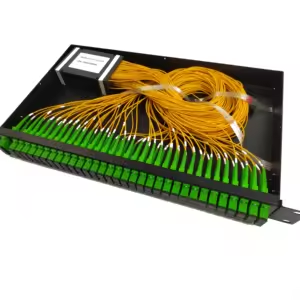
Fiber Optic Splitters and Patch Cords: Essential Components of Optical Networks
Fiber optic technology has revolutionized data communication, offering unmatched speed, reliability, and efficiency. Among the many components that make up a fiber optic network, fiber optic splitters and patch cords are indispensable. They play vital roles in ensuring smooth data transmission and network flexibility.
What are Fiber Optic Splitters?
Fiber optic splitters are devices that split a single fiber optic signal into multiple signals. They are passive devices, meaning they do not require external power to function, and are integral to Passive Optical Networks (PONs) used in telecommunications and internet distribution.
Key Features of Fiber Optic Splitters:
Signal Distribution: Divides optical power from one input fiber to multiple output fibers.
High Efficiency: Maintains signal integrity with minimal loss.
Compact Design: Available in small, durable casings for easy installation.
Common Applications:
FTTx Networks: Used in Fiber-to-the-Home (FTTH) and Fiber-to-the-Building (FTTB) setups.
Data Centers: Enable efficient bandwidth distribution to multiple endpoints.
Broadcasting: For splitting optical signals in TV and media networks.
Types of Fiber Optic Patch Cords:
1. Single-Mode Patch Cords: For long-distance, high-speed connections.
2. Multi-Mode Patch Cords: For short-distance, high-bandwidth applications.
3. Connector Types: Available with LC, SC, ST, and other connector types to suit various devices.
Conclusion
Fiber optic splitters and patch cords are fundamental to modern optical networks, enabling efficient signal distribution and reliable connections. Whether you’re setting up an extensive telecommunications system or a compact data center, these components ensure seamless and high-performance operations.
If you’re considering upgrading or designing a fiber optic network, understanding the roles of splitters and patch cords is essential. Their proper selection and installation can significantly enhance your system’s reliability and efficiency.
